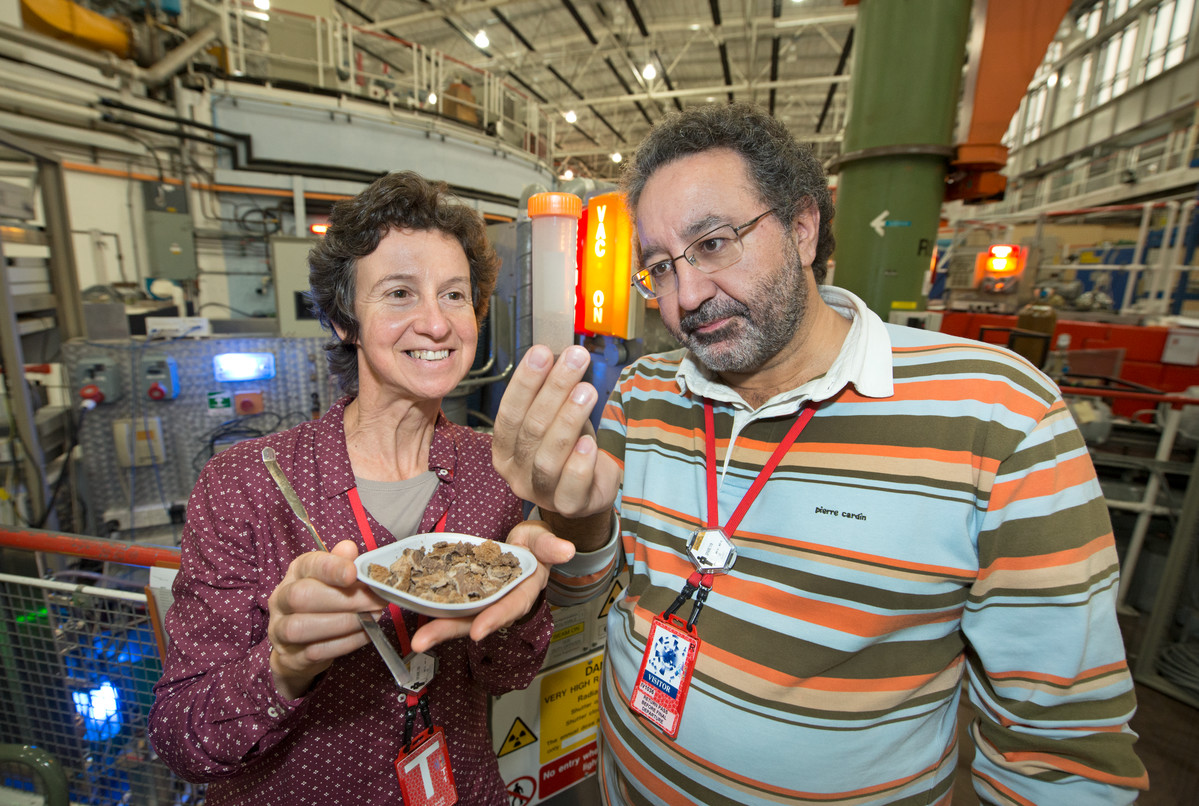However, analysing bones that have been subjected to heat is a complex, multi-stage process. Researchers from the University of Coimbra, Portugal, have been working with ISIS scientist Stewart Parker using neutrons to better characterise forensic and archaeological skeletal remains that have been subjected to heating. The work is published in the journal Royal Society Open Science.
The latest results are part of an ongoing research collaboration between the University of Coimbra and ISIS Neutron and Muon Source. The study aimed to analyse human bones exposed to low to medium temperatures (200–650°C) under experimentally controlled conditions, both oxidising and reducing. The lowest temperature limit of 200°C includes temperatures that are easily achieved in cooking vessels, to provide information regarding cannibalism or ancient bone boiling and defleshing rituals. This temperature range is particularly challenging as bones heated to around 500°C are more fragile than at higher temperatures due their porosity and because the physical and chemical changes occurring after burial can mimic the effects of low intensity heating, in some cases making it impossible to distinguish between buried and moderately heated bone. As a result, until now data on bones burnt within this temperature range has been limited.
The data obtained using neutrons on human bones heated between 200 and 650°C showed a different response to different oxygen availability. Overall, the presence of oxygen lowered the temperature at which major changes in the bone were detected, for example lipids and proteins were destroyed at around 300°C in aerobic environments compared to 450–550°C in anaerobic media. This valuable data shows the potential of recreating the bone heating conditions to obtain relevant archaeological information and to assist forensic investigation.
The latest study complements existing research from the group on higher burning temperatures. The complete data now spans from 200 to 1000°C (as well as for unburned samples), contributing to a better understanding of heat-induced changes in human bone. The spectral biomarkers already identified are able to be used in real scenarios, both forensic and archaeological, to allow the determination of the maximum heating temperatures of burned human skeletal remains and to recreate the bone heating conditions—namely whether the specimens have been subject to cooking or to intense heating processes such as cremation. In the future they may also assist in the interpretation of bone mineralization processes that occur during fossilization, which may help to provide reliable information on the biology of extinct vertebrates.
Stewart Parkers says, "This was a fascinating piece of research to be involved in and really demonstrates the breadth of applications of neutron science. Neutrons provide a non-destructive way of gaining unique insights into materials from catalysts and materials for the electronics industry to biological samples. The collaboration between ISIS and the University of Coimbra in Portugal goes back over 20 years. The current project has allowed us to get detailed information on how, and why, bones change through burning, both helping us understand our ancestry and explore potential forensic applications."

ISIS users Maria Paula Marques and Louis Batista de Caivallio from the Universidade de Coimbra, Portugal, on the MAPS instrument looking at human bone structure after burning on an earlier experiment in November 2015.
The full paper can be found at DOI: 10.1098/rsos.210774
